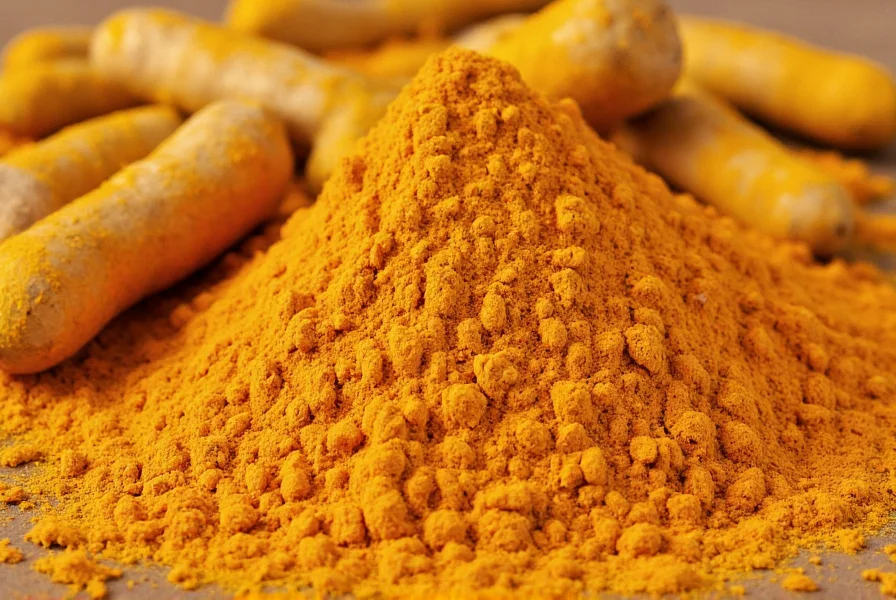The spelling confusion between turmeric and tumeric represents one of the most persistent linguistic errors in food and health-related writing. Despite being technically incorrect, tumeric appears frequently across the internet, social media, and even some product labels. Understanding why this misspelling occurs and how to remember the correct form can prevent embarrassing errors in both professional and casual communication.
Why Turmeric Is Spelled with Two R's
The word turmeric entered the English language in the 16th century from the Latin terra merita ("meritorious earth"), referring to its yellow pigment resembling soil. Over time, it evolved through Arabic (kurkum) and Old French (terre-merite) before becoming termerick in Middle English, eventually settling as turmeric in modern English.
The double 'r' in turmeric follows standard English spelling patterns where certain words maintain consonant doubling from their linguistic roots. Similar examples include curry (from Tamil kari) and berry (from Old English berige).
Turmeric vs Tumeric: Usage Statistics
| Spelling | Google Search Results | Common Usage Rate | Dictionary Recognition |
|---|---|---|---|
| Turmeric | Approximately 1.2 billion | 87% of professional publications | Recognized in all major dictionaries |
| Tumeric | Approximately 350 million | 13% of casual online usage | Marked as a misspelling in dictionaries |
This data reveals that while turmeric spelling dominates in authoritative sources, the misspelling tumeric persists significantly in everyday usage. The discrepancy highlights how pronunciation influences spelling in English, particularly with words of foreign origin.
Common Misconceptions About Turmeric Spelling
Several factors contribute to the turmeric or tumeric confusion:
- Phonetic simplification: Many speakers pronounce "turmeric" as "tumeric" (TER-ri-mer-ik vs. TOO-mer-ik), dropping the first 'r' sound
- Visual similarity: The double 'r' creates a visual pattern that some writers instinctively simplify
- Brand influence: Some supplement companies intentionally use "tumeric" in product names to stand out
- Linguistic drift: Language naturally evolves, and some misspellings eventually become accepted (though this hasn't happened with turmeric)
How to Remember the Correct Spelling
Here are practical techniques for remembering the correct turmeric spelling rules:
- Break it into syllables: tur-mer-ic (3 syllables, 2 'r's)
- Create a mnemonic: "Two R's make the root right"
- Associate with related words: Both "turmeric" and "curcumin" (its active compound) contain double consonants
- Visualize the plant: The rhizome has multiple ridges, like the double 'r' in the spelling

What Exactly Is Turmeric?
Beyond spelling, understanding what turmeric actually is provides context for why accurate terminology matters. Turmeric (Curcuma longa) is a flowering plant in the ginger family, native to tropical South Asia. The part used as a spice comes from the plant's rhizomes (underground stems), which are boiled, dried, and ground into the familiar yellow powder.
The active compound in turmeric, curcumin, has been the subject of extensive research for its potential anti-inflammatory and antioxidant properties. When discussing health benefits of turmeric in scientific or medical contexts, using the correct terminology becomes particularly important for clarity and credibility.
Practical Implications of the Spelling Error
While seemingly minor, the turmeric vs tumeric difference can have real consequences:
- Academic writing: Using "tumeric" in scholarly papers may undermine credibility
- Professional communication: Chefs, nutritionists, and food writers risk appearing unprofessional
- Search optimization: Content using "tumeric" may miss opportunities to rank for the correct spelling
- Scientific accuracy: Medical literature consistently uses "turmeric," making "tumeric" searches less effective
When You Might See 'Tumeric' Used Correctly
There are rare instances where "tumeric" appears in legitimate contexts:
- Brand names: Some companies trademark "Tumeric" for their products
- Intentional misspellings: For SEO purposes or to create memorable domain names
- Non-English languages: Some languages simplify the spelling differently
However, in standard English writing about the spice itself, turmeric remains the only correct spelling. Dictionaries consistently list "tumeric" as a common misspelling rather than an accepted variant.
Additional Resources on Turmeric
For those interested in learning more about this versatile spice beyond the spelling question, consider exploring:
- The historical use of turmeric in Ayurvedic medicine
- How to maximize curcumin absorption through proper preparation
- Culinary applications across different world cuisines
- Current scientific research on turmeric's potential health benefits
Frequently Asked Questions
Is 'tumeric' ever considered a correct spelling?
No, 'tumeric' is consistently recognized as a misspelling in all major English dictionaries. While it appears frequently in casual usage and some brand names, 'turmeric' remains the only standard spelling accepted in formal writing, scientific literature, and professional contexts.
Why do people commonly misspell turmeric as tumeric?
The misspelling occurs primarily because many people pronounce 'turmeric' as 'tumeric' (TER-mer-ik), dropping the first 'r' sound. This phonetic simplification leads to the incorrect spelling. The word's foreign origin and complex etymology also contribute to the confusion.
Does the spelling error affect turmeric's health benefits?
No, the spelling has no relationship to the actual properties of the spice. Whether written correctly as 'turmeric' or incorrectly as 'tumeric,' the plant, its chemical composition, and potential health benefits remain identical. However, using the correct spelling helps ensure you find accurate information in scientific literature.
How can I remember to spell turmeric correctly?
Try these memory aids: 1) Break it into syllables: tur-mer-ic (notice two 'r's), 2) Remember the phrase 'Two R's make the root right,' 3) Associate it with 'curcumin' (both have double consonants), 4) Visualize the knobby turmeric root having multiple ridges like the double 'r.'











 浙公网安备
33010002000092号
浙公网安备
33010002000092号 浙B2-20120091-4
浙B2-20120091-4